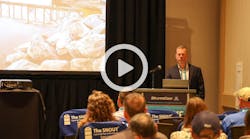
It’s clear that the Environmental Protection Agency is undergoing some tremendous changes under the current presidential administration, with the president proposing to reduce the agency’s budget by 31%. EPA Administrator Scott Pruitt has been a strong proponent of cutting back his agency’s reach, reducing environmental regulation, revising or rescinding the Clean Water Rule, and generally leaving much of the oversight and enforcement that the federal government has been performing to be done—or not—by individual states. One area where he seems to be at odds with the president, though, is in the treatment of Superfund sites. Pruitt has said that cleaning up such sites is one of his priorities, but the president’s proposed budget would drastically reduce funding for the Superfund cleanup program.
This Washington Post article looks at the issue in more detail, in particular as it relates to a contaminated landfill site in Missouri called West Lake, which contains radioactive waste dating back to the Manhattan Project. According to the article, despite having less funding to work with, Pruitt has promised to speed up cleanup efforts not only at West Lake but also at other Superfund sites around the country. “It’s not a matter of money,” he’s quoted as saying in the article. “It’s a matter of leadership and attitude and management.”
The budget for Superfund sites—originally funded by the polluters themselves, when the companies involved were still in business and could be held accountable, as well as by taxes on the petroleum and chemical industries—has been shrinking for decades. The tax expired in 1995; last year the program was funded for about $1.1 billion, which is about half of its 1999 funding, and Trump’s proposed budget would remove an additional $330 million.
As the money has declined over the years, fewer cleanups have been completed, and Pruitt has argued that taking no action on the contaminated sites is not serving the public’s interest. He has said part of the problem is that the program’s administrative costs are too high and that there is a lack of initiative within the program. He has also spoken optimistically of encouraging private investment in the Superfund cleanup program.
Some people, though, including many living near West Lake and other Superfund sites, have worried aloud that if the goal is to check boxes and show that more sites are being handled, the agency might take shortcuts in dealing with the cleanups. At West Lake, for example, completely removing the radioactive material could cost more than $400 million, but leaving it in place and capping the site—a solution some nearby residents oppose—could be accomplished for about $50 million. A consultant quoted in the article notes, “The cheapest and quickest option is not always the best. It’s dangerous to not get it right the first time.”
A great many Superfund sites involve contaminated soils or sediments. Have you been involved with work on a Superfund site? And how realistic do you think it would be to get private funding for future cleanup projects?
About the Author
Janice Kaspersen
Janice Kaspersen is the former editor of Erosion Control and Stormwater magazines.

